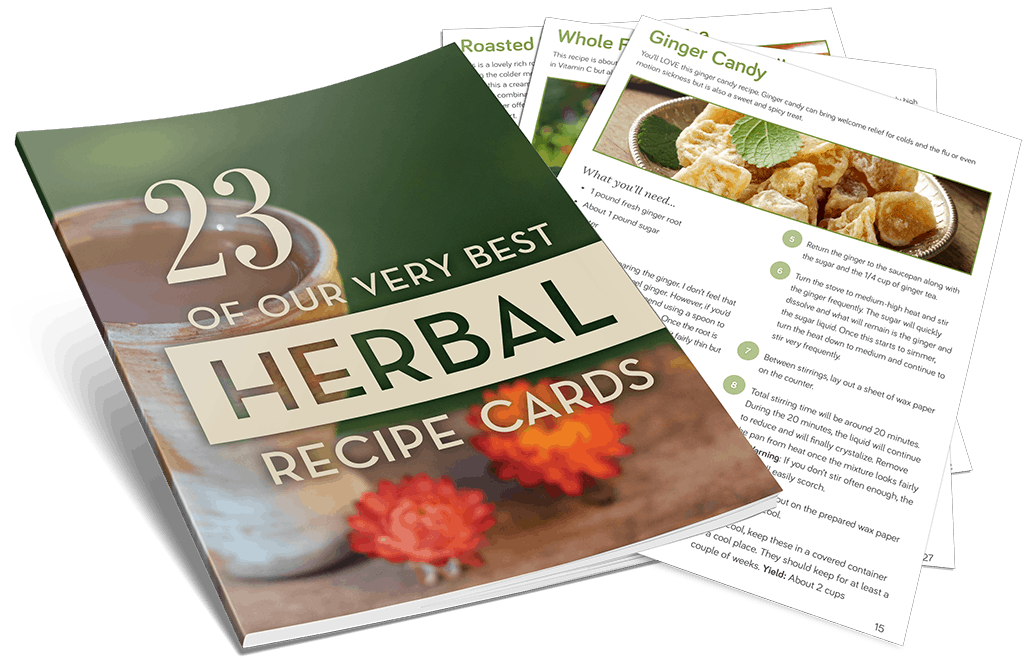Making hand-milled soap is a simple way to repurpose soap. It is frugal and a great self-sufficient skill to have.
Hand-milling involves grinding, grating, or cutting premade soap and melting it to use again. This premade soap can be a melt and pour base, a botched hot or cold process soap batch, or the small unwanted soap pieces that you’ve collected from around the house over time.
Though you use a slow cooker, it’s different from hot process soap because you are not making it from scratch. There is no lye involved. It’s also different from melt and pour because you don’t need a melt and pour base with extra glycerin added for smoothness. The hand-milling process takes into account that you’ll be using fully made, regular soap pieces and adds moisture to counter the possible drying effect of the slow cooker. Non-natural store-bought soaps are not recommended for making hand-milled soap. They tend to become slimy because of their extra ingredients.
To make hand-milled soap, simply cut soap pieces into small pieces (1 inch x 1 inch) or use a large hole cheese greater or food processor to grate or grind soap.
Place soap in a slow cooker on the lowest setting and cover with plastic wrap or a lid that seals very well. You do not want to lose moisture.
Allow soap to melt fully before removing cover/lid. Melting will begin beside the hotter edges of the slow cooker and work its way to the middle. Once the soap is fully melted, remove the cover/lid, add natural additives, and blend. Scrape into a prepared mold and allow to cool.
You can use the soap as soon as it is cool, though letting it sit for 1–2 weeks will give it time to harden further and last longer.
This Cinnamon Oats Hand-Milled Soap recipe is a lot of fun, lightly exfoliating, and smells amazing. You can get a lot more hand-milling recipes and beginning soap making recipes for melt and pour and cold process as well in my book, Easy Soap Making.
Cinnamon Oats Hand-Milled Soap
Recipe from Easy Soap Making by Kelly Cable, “Grounding, Exfoliating, Body Bar”
For your hand-milled soap you’ll need 2 pounds of natural soap that doesn’t have additives like scents and coloring. Working with plain soap lets you add the color and scent of your choosing. You can use cold processed soap bars, cold process bases (milk or vegan), or pieces you have saved from your home.
Start to finish time: 20 minutes active work time. 1 hour cook time; more or less depending on the heat level of your slow cooker.
Safety: Hand-milling is hot once melted. Be careful when heating and pouring your soap, especially if children are helping.
What you’ll need…
Equipment:
- Large glass bowl
- Small bowl to measure essential oils
- Kitchen scale
- Food grater
- Measuring cups
- Measuring spoons
- Rubber spatula
- Large stainless steel spoon
- Slow cooker
- Plastic wrap
- Immersion blender
- 2 pound mold
- Knife or pastry cutter
Ingredients:
- 2 pound soap base
- 1/2 cup water
- 1/4 cup ground oats
- 1/2 teaspoon ground cinnamon
- 0.60 ounces cinnamon leaf essential oil
- To begin making your hand-milled soap, weigh 2 pounds of soap and grate into a large glass bowl.
- Place soap into a slow cooker on its lowest setting and add the water. Stir and seal with plastic wrap, or a tight lid if you do not use plastic.
- The soap will begin to melt and bubble, usually starting from the edges and working its way to the middle. When the whole batch is melted and bubbly, remove plastic wrap, weigh and add essential oils, and add ground oats and cinnamon. Blend with an immersion blender.
- Scoop into prepared mold and allow to cool and harden for 24 to 48 hours. After removed from the mold, use a knife or pastry cutter to cut your Cinnamon Oats Hand-Milled Soap into bars and allow to harden for 7 to 14 days for a longer lasting bar.
Tips:
- Experiment with your slow cooker until you know its heat level. If your slow cooker is too hot where the sides of the soap look like they are drying out, turn the slow cooker to its warming setting. If you feel like it’s taking forever to melt the soap, then turn it up one notch, but watch to make sure it’s not too hot.
- Use plastic wrap or a piece of butcher paper to pat the top of the cooling soap flat if desired, or use a fork or the back of a spoon to give a rough look to the top.
Enjoy your Cinnamon Oats Hand-Milled Soap!











This is awesome! Love learning new ways to use my herbs. Thanks!
I just made me some dandelion vinegar this year for first time to use in salads. I also will try dandelion oil infusions this next spring. Getting unsprayed flowers is a challenge when live in town now.
Hi Kelly! I’m dying to try this! Can I use plain old Ivory soap since there are no colors or perfumes?
Hi Sherry, thank you for your question! I will look into this and let you know. :)
Hi Sherry, you can definitely use Ivory since it is real soap.
Can goats milk or Shea melt & pour soap base be used or only cold-process? Thank you for sharing this recipe.
Hi Ali, This recipe was meant for using either cold process soap or hot process soap.
If you are using melt and pour soap, you do not need to add the water in the recipe. Just put the melt and pour soap in a double broiler, melt it, then add your additives, and pour into molds.
Thank you
Can i use native Africa Black soap for this mixture.
Hi Abiola, Yes, you can use African Black soap. I have used African black soap when making rebatched soap.
Thanks for this recipe! Two questions- 1. Can I use steel cut oats and just hand mix in? 2. If using regular oats can they be added
to the food processor while crumbling soap squares?
Hi Ann, I have not used steel cut oats in soap before, but I think it would be too hard? I suggest rolled or instant oats, and you can grind them to make a powder.
I ordered your book” easy soap making” yesterday and got it today. Nice book. BUT I can’t put in into that I ordered to get your bonuses such as soap labels etc… I figured it was my amazon order number for purchasing your book.
Fawn
Hi Fawn, you may want to contact Kelly directly at SimpleLifeMom.com because LearningHerbs does not have access to her bonuses.
Is the 0.60 ounces cinnamon leaf essential oil volume (fluid ounces) or weight ounces?
Hi Pat,when I make rebatched soap, I use a scale. I am not sure what Kelly used. Please note that cinnamon leaf essential oil is really strong.
I was thinking that 0.6 fl oz = 18 mL of cinnamon EO seemed like quite a bit, but as I’ve never made soap before, I just figured I wasn’t aware that so much was used in soap making. While trying to quickly research cinnamon oil weight to volume conversion (with no answers) I found a tread stating that anything over 0.3 oz of cinnamon per pound of oil (yes, I realize we don’t know the oil/fat amount with this process) can irritate the skin (which had crossed my mind while reading this recipe, but I disregard the thought since Kelly is a book writing professional soap maker) but then I finally reread and noticed I’d totally glazed over that it’s cinnamon LEAF oil! I’m actually totally unfamiliar with it, but sounds interesting. I’ve had the same 1oz bottle of cassia bark since I began using EO’s around 2012! Its like the never-emptying vessel; I typically only use 1-3 drops at a time or maybe ~22 in a batch of product as its strong stuff.
Is there any way someone could tell me how much cinnamon cassia oil to use in this recipe, so I can get this old bottle used up!? Is this an ok substitution, of coarse at a lower amount?
Thanks so much for this recipe, I LOVE oatmeal soaps & have so many tiny bar hunks that I was just about to toss. I might cut the recipe in half or just add in some older handmade soaps I’ve been unnecessarily hoarding for sentimental reasons. ? I imagine I’m not the only one here with a substantial collection of natural & handmade soaps.? I like to cut them into 3rds or 4ths so I can change bars more often & when it gets down to that last hunk I usually just want to hold onto it for a ‘rainy’ day!
Hi Emily, soap requires a lot of essential oil. For cinnamon, there is a leaf essential oil and a bark essential oil; they have different chemistry and safety precautions. I personally would recommend using low amounts of cinnamon leaf essential oil in soap, if someone chooses to use it in soap.
For cassia essential oil, it is a very irritating essential oil and has a low max dermal concentration, so needs to be used with respect. If you choose to use it, I would only use tiny amounts (like you have in the past) and don’t use the soap on very sensitive areas of the body. In addition, cassia essential oil tends to have a shelf life of about 4 years (maybe longer if stored in the fridge or another cool, dark place).
Have fun making the oatmeal soap!
Can you use castile soap?
Hi Myke, you can definitely use castile soap when rebatching soap!